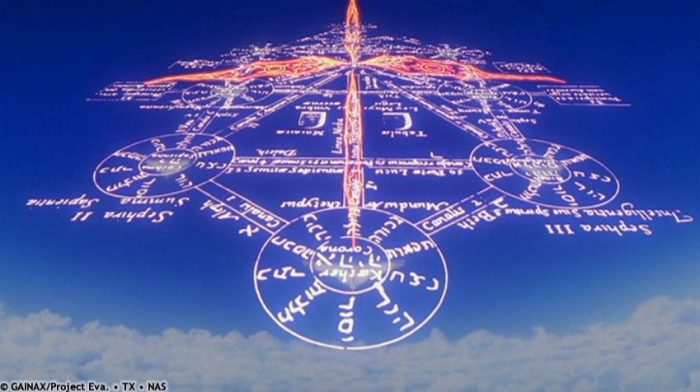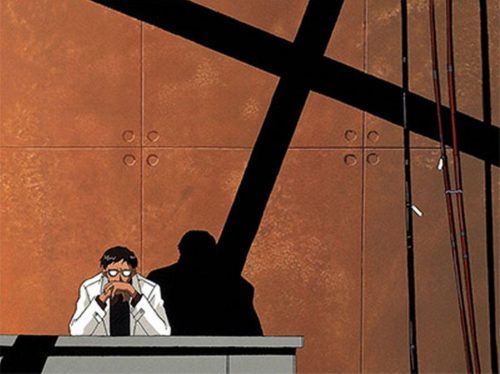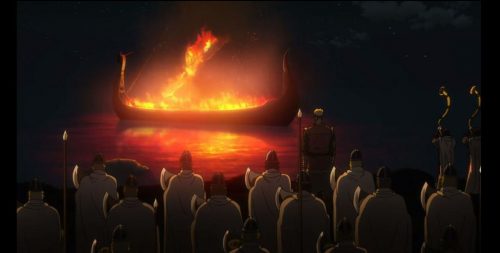
Despite the fact that most modern Japanese people aren’t devout practitioners of any particular religion (Buddhism and Shintoism are thought of as more cultural than spiritual, for the most part), plenty of anime use religion or religious symbolism as part of their stories in one way or another. So, let’s take a closer look at several shows that approach the subject in different ways to see what the medium of anime has to say about religion!
Crosses are Cool

Less than 1% of Japanese people claim to be Christian, but it’s only natural that some aspects of the world’s largest religion would seep into Japanese culture anyway. Christian weddings, angels and demons, crosses, and holy resurrection are all concepts that Japanese people are at least vaguely aware of, in the same way that most Westerners are vaguely aware of Hindusim through images of elephants, multi-armed gods, and lotus flowers. Some anime don’t have much to do with religion at all, but use these ideas and imagery as window dressing for their worlds because they look cool and can loosely tie into the story’s themes.
Neon Genesis Evangelion is probably the first anime people come up with when they think about shows that use religious symbolism purely for aesthetic purposes. Sure, the world’s destruction resembles something out of Revelations and Shinji’s character arc is partially about rebirth, but several staff members have explicitly stated that the Christian elements were just for visual flair (such as assistant director Kazuya Tsurumaki’s insistence that they were added to give the project a unique edge against other giant robot shows). There’s really nothing wrong with this approach, though. Evangelion’s visual style remains iconic to this day – from Lilith’s massive crucified body to the glowing crosses littering Earth’s surface during the End of Evangelion to the surreal designs of the Angels themselves – and the show just wouldn’t have been the same otherwise.
Then you’ve got anime like Death Note, which uses a bit of Christian symbolism to illustrate how Light thinks of himself as a god, or shows like Trigun and Bleach that push crosses and priest uniforms so far into anime badassery that they come up with stuff like Wolfwood’s Punisher – a 300lb cross that contains handguns, a rocket launcher, and a machine gun. We never saw anything like that at church growing up!
Interpretations of the Afterlife and Enlightenment

Some anime delve a little deeper than just aesthetics and decide to explore the more spiritual aspects of religion, such as the afterlife and Buddhist enlightenment. Death Parade and Noragami use Shintoism as a basis for their interpretations of how lost souls find their way to peace/reincarnation or the never-ending void, while Devilman Crybaby shows how one person’s selfishness can turn the whole world into their personal Hell.
Land of the Lustrous, on the other hand, puts its main character Phosphophyllite through near-endless suffering as a metaphor for enlightenment. As Phos’ body breaks over time, they replace the lost parts with materials that correspond to the Seven Treasures of Chinese Buddhism (gold, lapis lazuli, pearl, agate, etc.). They also learn more about the world and slowly become more “human” by travelling to the lands of the Admirabilis slug people and the Lunarians, both of whom are thought to represent aspects of humanity that the Gems lack. The world is stuck in a stalemate between all three species, but if Phos can let go of everything tying them to worldly desires (including pretty much all of their friends) and become a “complete” being, they might just be able to make a difference.
It can be difficult to notice religious symbolism and themes in shows like these, since they’re light on recognizable imagery and focus more on spirituality and personal growth than doctrine, but once you see what they’re going for, it adds a whole new dimension to the story.
Criticism of Religion Itself
Now we get to the most overt incorporations of religion into anime – the direct critique of religion itself. Higurashi: When They Cry and Tales of Symphonia: The Animation aren’t explicitly pointing fingers at real world religions, but they both show how one person’s wishes can be corrupted over the years by unscrupulous people who only want to manipulate others for their own gain. What once was a message of peace can morph into an institution of violence very quickly if left unchecked…

Perhaps the best recent anime to openly criticize religion, though, is Vinland Saga. The Vikings’ belief in Valhalla – a blessed afterlife only reachable by dying in battle – is shown to be extremely destructive, since the soldiers will run into a fight even when it’s objectively the wrong decision just to secure their place among the Valkyries. Thorfinn, who grew up surrounded by these people, becomes convinced that violence is the solution to every problem and that he can only be worthwhile as a person if he exacts vengeance against the man who killed his father. The Vikings will pillage and burn every village they come across with no thought spared for the innocent lives they’re extinguishing, but still see themselves as righteous because they’re strong warriors.
On the other hand, Canute’s character arc portrays blind allegiance to Christianity as equally bad. Despite being Norse himself, Prince Canute insists on opposing his culture’s values by praying to Jesus for protection instead of fighting anyone else. He eventually snaps when he realizes that simple prayer hasn’t saved anyone or changed his own life for the better, so he vows to reject salvation from God and attempts to create a paradise on Earth with his own two hands. According to Vinland Saga, accepting religion at face value can be disastrous – you must make your own informed decisions to get any use out of it.
Final Thoughts

If you’re looking for more religious symbolism and criticism in anime, take a look at Fire Force as well. Fire itself represents a sort of cleansing ritual and Catholic imagery is used to paint the Holy Sol Temple as a labyrinthine, all-powerful authority that people follow blindly, try to change from the inside, or fight against on principle. Check it out!
What did you think of our overview? Are there any other anime with religious symbolism that we missed? Do you disagree with any of our interpretations? Let us know in the comments, and thanks so much for reading!

